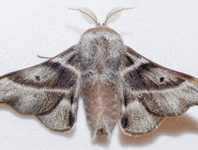Abstract
Of the 16 species listed in the genus Liophloeothrips (ThripsWiki 2018), 13 are known only from India, and all of these are phytophagous with some inducing galls in various plant families (Tyagi & Kumar 2011). However, the biology of the type species, L. glaber, as well as that of the other two species, L. hungaricus and L. pulchrisetis, remains in doubt. Each of these three species is from Europe, with L. pulchrisetis known from a single female, L. glaber from two specimens, and hungaricus recorded from Hungary, Finland and Iran on a very few individuals (Minaei & Mound 2014). The record of L. hungaricus from Iran was published without any information concerning the locality, date of collection, or number of specimens (Mortazawiha 1995). However, Minaei and Mound (2014) pointed out that the slide label data of L. hungaricus specimens from Europe suggested that this species is associated with the bark of certain Salicaceae. Moreover, they indicated the possibility that the three names might actually represent a single species, although the male of L. glabrus has a sternal pore plate whereas this is apparently absent in hungaricus. Given the few known specimens, it is not possible to know if these thrips live under bark and feed on fungal hyphae, or if the few specimens collected were actually leaf-feeders that were sheltering under bark. In this paper, a new species of the genus is described from southern Iran, based on both sexes. These specimens were extracted from leaf litter using a Berlese funnel, thus again it is not possible to be certain if the species is part of the community of fungus-feeding litter thrips, or if the specimens were merely sheltering.
References
Ananthakrishnan, T.N. & Swaminathan, S. (1980) A new genus and two new species of thrips inhabiting Eugenia galls (Thysanoptera: Phlaeothripidae). Bulletin of the Zoological Survey of India, 2, 207–211.
Minaei, K. & Mound, L. (2014) The Liothrips-lineage of thrips (Thysanoptera: Phlaeothripidae) from Iran with the first record of micropterous morph of a Liothrips species. Zootaxa, 3889 (1), 107–117.
https://doi.org/10.11646/zootaxa.3889.1.6
Mortazawiha, A. (1995) Introduction of 15 species of thrips (Thysanoptera) collected in Iran. Proceedings of the 12th Iranian Plant Protection Congress, pp. 1–341. [Junior College of Agriculture, Karaj]
Mound, L.A. (1994) Thrips and gall induction: a search for patterns. In: Williams, M.A.J. [Ed.], Plant Galls: Organisms, Interactions, Populations. Systematics Association Special Volume 49. Clarendon Press, Oxford, pp. 131–149.
Mound, L., Collins, D. & Hastings, A. (2018) Thysanoptera Britannica et Hibernica. A guide to British thrips. Lucidcentral.org, Identic Pty Ltd, Queensland, Australia. Available from: https://keys.lucidcentral.org/keys/v3/british_thrips/ (Accessed 22 Mar. 2019)
Mound, L.A. & Kibby, G. (1998) Thysanoptera: an Identification Guide. Cab International, London. 70 pp.
Mound, L.A. & Marullo, R. (1996) The Thrips of Central and South America: An Introduction. Memoirs on Entomology, International 6, 1–488.
ThripsWiki (2018) ThripsWiki—providing information on the World's thrips. Available from: http://thrips.info/wiki/Main_Page (Accessed 22 December 2018)
Tyagi, K. & Kumar, V. (2011) The Indian species of Liophloeothrips Priesner (Thysanoptera, Phlaeothripidae) with one new species. Zootaxa, 2803, 21–31.
https://doi.org/10.11646/zootaxa.2803.1.2

